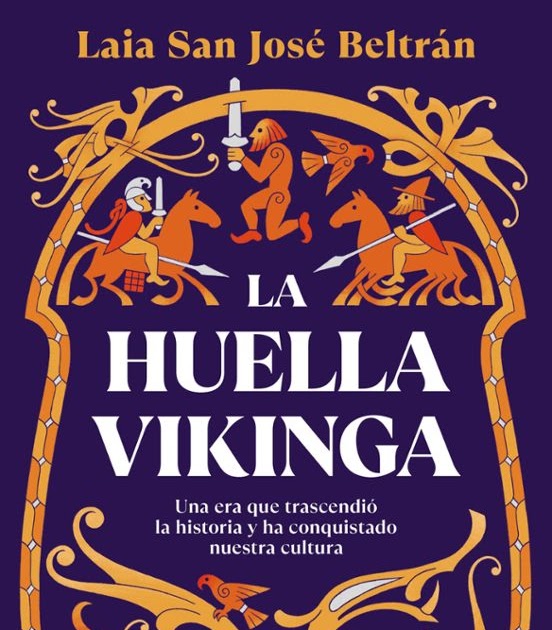
Language: español
Year of publication: 2024
Valoración: advisable
Let me copy myself and start this review in the same way as another that I wrote from another book on the same subject: the Vikings are fashionable … (who wishes to continue reading my modest assertion, can do so in the review of The kings of the riverby Cat Jarman). What means, among other things, that they have appeared, directly or indirectly, in a multitude of recent cultural products, as they have done, intermittently, the last three hundred years, attributing them to stereotyped characteristics, but changing throughout weather.
To this image or images of “Lo Vikingo” in our society and the use of them in the different times and for diverse reasons or interests is what the historian and disseminator in social networks and television Laia San José Beltrán – under the nickname @Thevalyckiesvigil-, a specialist in the subject, has dedicated this book, which is not, therefore (notice to navigators), a manual of History and Culture Vikingas … which does not mean that both one and the other do not obviously have obviously, A preeminent place in the book. Although the same would be to talk about Nordic history and culture, since the author begins, precisely, establishing what is “Viking” and how we should use the term rigorously.
From here the author explains the different conceptions of the Vikings that have been happening since their “rediscovery” in the eighteenth and nineteenth centuries to the present, passing through the “Vikingomania” of the Victorian era or its inclusion in the Cinema and superhero comics. Of course, also its ideological use by the Scandinavian and American nationalisms of the XIX or the incombustible Nazis in the XX (and their filled grandchildren, today). With great historiographic and philological scholarship, while exhibition clarity, Laia San José is dismantling the false premises on which these ideologies base their more or less spounding use of the figure of the Vikings. Likewise, a couple of chapters on Viking women -or Nordic of the time are included in the book, in general -three if another dedicated to the mythical figurine is taken into account (how not, of course, in this case). Also another one about what the author calls “queerkings”, that is, the presence of what we know today as queer Among the Vikings. All these chapters will be those who consider them a concession to wokism or even to the current propensity to present the feminist and lgtbi+ slope of any subject, but, in my opinion, they are relevant, not sñolo for historical precision, but for contracting the excess testosteronic that has solved to accompany the topical image of the Viking world (the same could be said of other groups and/or historical periods).
The most interested thing about the book is, however, it is, I think, the successful combination of, on the one hand, the references to the Vikings, more or less evident, in different manifestations of popular culture, from the operas of Wagner (yes , Friends, the opera, at another time, was a fairly popular show) to the Hollywoodian cinema or recent television series, together, on the other hand, the deployment of historiographic rigor and erudition that I have mentioned before. Perhaps, with regard to pure entertainment products, some lecor or reader can feel somewhat misplaced if he does not know it (it is what happens to me, for example, with video games), but, thanks to San Google is not that this supposes an impediment to follow the explanations of the book. In addition to the fact that these examples are not something anecdotal, since the central idea of the book is not to give us a general panoramic view of the +viking time -although, to a large extent, it does -much less being a manual of history of The Vikings, but to guide us through their survival and influence – the footprint that mentions the title – in our days, and an important aspect represents, without a doubt, its recurring presence in literary and audiovisual fiction. Not to mention the great popularity that the image of the Vikings continues, both for the marketing of different products, the motivation of gymbros and other candidates for personal and professional triumph or, simply, as a helpless costume in the carnivals. Of course: the helmet, without horns, please …
Source: https://unlibroaldia.blogspot.com/2025/02/laia-san-jose-beltran-la-huella-vikinga.html


